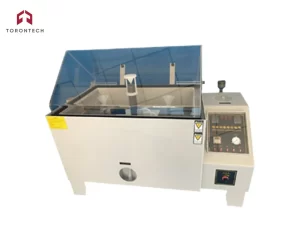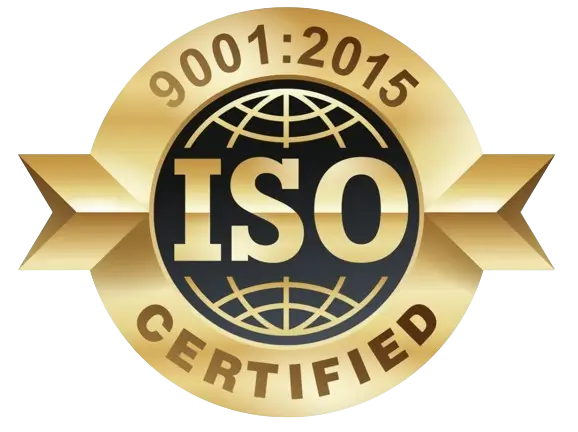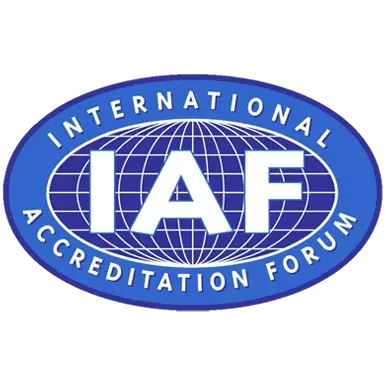Salt Spray Corrosion Test Chamber TT-B117
Salt Spray Corrosion Test Chamber TT-B117
Salt Spray Corrosion Test Chamber TT-B117 is an environmental testing apparatus primarily utilized to replicate salt spray conditions for assessing the corrosion resistance of products or metal materials.
(1) The neutral salt spray test stands as one of the most widely utilized accelerated corrosion testing methods. It uses a 5% sodium chloride solution with a solution pH value within the neutral range (6 to 7) as the spray solution. Test conditions include a temperature of 35 degrees Celsius, with a salt spray deposition rate ranging between 1 and 2 ml/80 cm2 per hour.
(2) The acetate spray test involves the addition of acetic acid to a 5% sodium chloride solution.
(3) The copper accelerated acetic acid salt spray test is a newly developed rapid salt fog corrosion test utilized abroad. Conducted at a temperature of 50 degrees Celsius, it involves the addition of a small quantity of copper salt and copper salt solution, inducing corrosion more aggressively. This test proceeds approximately 8 times faster than the NSS test.
(4) The alternating salt spray test serves as a comprehensive salt spray testing method.
1. BS 3900 F12 (ISO 7253): British salt spray test method
2. ASTM B117: Salt spray test method
3. GB/T2423.17-2008: Salt spray test method
4. GB/T 2423.18-2000: "Basic rules of electrical and electronic products test Ka"
5. GB/T10125-1997: Corrosion tests in artificial atmospheres - Salt fog test
6. Technical specification for GB/T10587-2006: Salt spray test chamber
7. Method for measuring environmental parameters of GB10593.2-1990: Electrical and electronic products
8. Determination of heat resistance, salt fog resistance, weather resistance GB/T1765-1979 (Accelerated) film system test
9. GB/T1771-2007: Paints and varnishes - Determination of resistance to neutral salt spray
10. GB/T12967.3-2008: Aluminium and aluminium alloy anodic oxide film detection method third part: Copper acceleration
11. GB/T5170.8-2008 and equivalent IEC, MIL, DIN, ASTM, and other related standards: Test method
Test method can be done:
Salt spray test (SS test) for neutral salt spray test (NSS test)
Salt spray test (ASS test)
Copper accelerated acetic acid test
Test temperatures:
- Neutral salt spray test:
- Test Room: 35 ± 1°C
- Saturated air barrel: 47 ± 1°C
- Acid corrosion test:
- Test Room: 50 ± 1°C
- Saturated air barrel: 63 ± 1°C
These temperatures can be adjusted according to JIS and CNS standards.
Detailed parameter description
Type and Model: TT-B117
Description:
- Inner box size: 500 x 600 x 450mm (Width * Depth * Height)
- Experimental box temperature range: Room temperature +10°C to 65°C
- Saturated barrel temperature range: Room temperature +10°C to 70°C
- Humidity range: Greater than 95% RH
- Temperature fluctuation: Less than 0.5°C
- Temperature uniformity: Less than or equal to 2°C
- Temperature deviation: Less than 2°C
- Salt spray deposition: 1 to 2 mL/80cm2 per hour (average over more than 16 hours)
- Spray mode: Pneumatic, continuous, with gap spray mode selection
- Test methods: Neutral salt spray test (NSS test), Acetic salt spray test (AASS test), Copper accelerated acetic acid salt spray test (CASS test)





